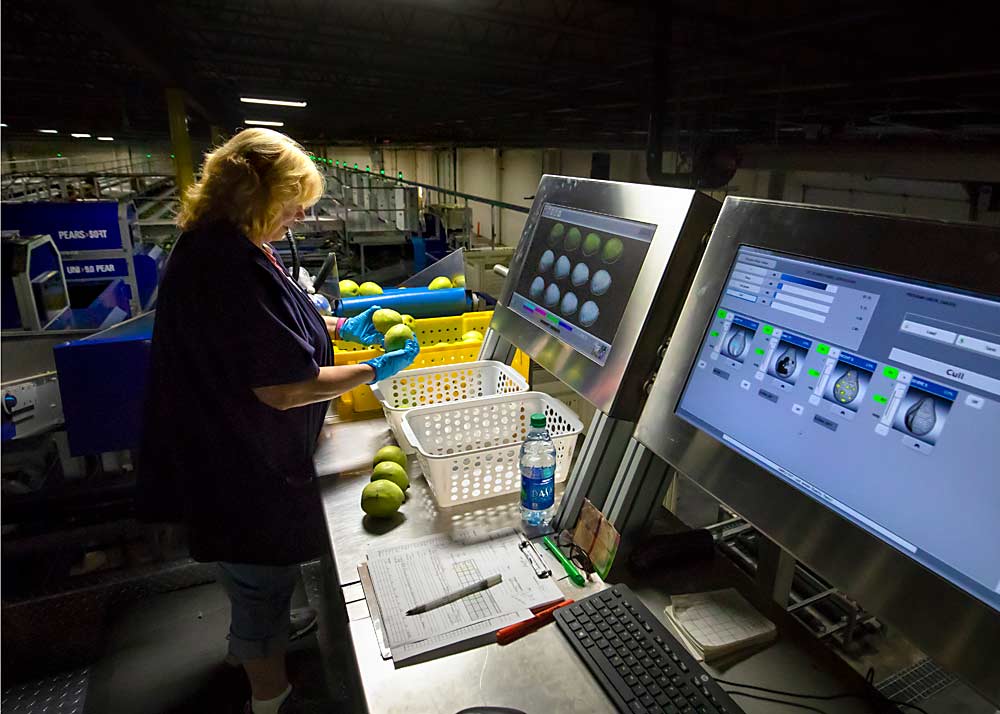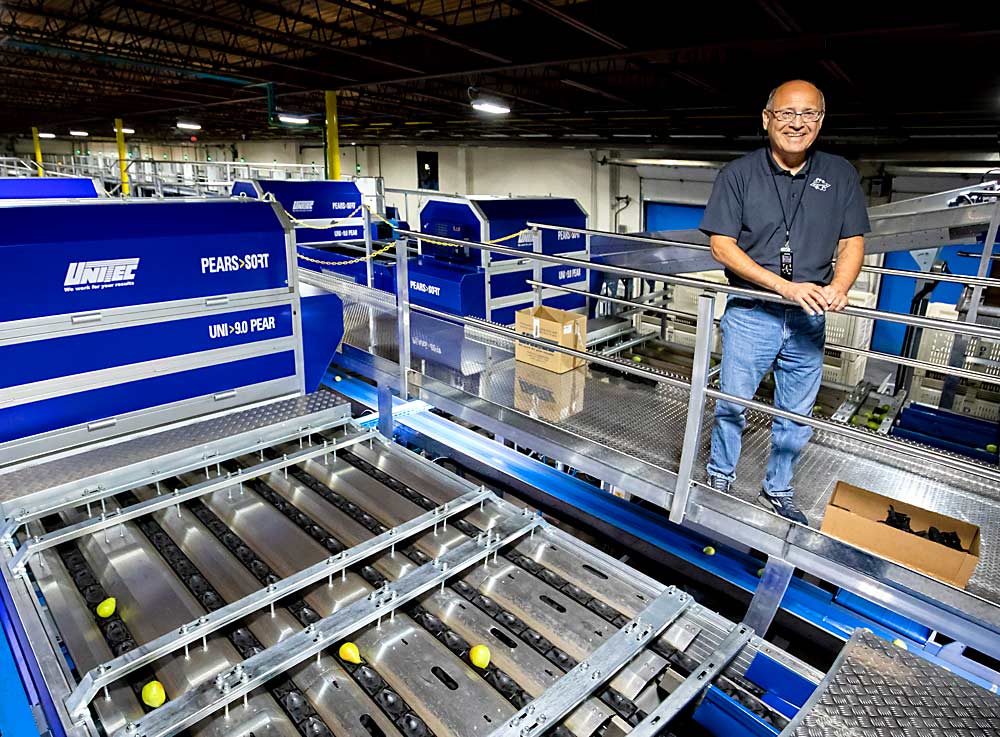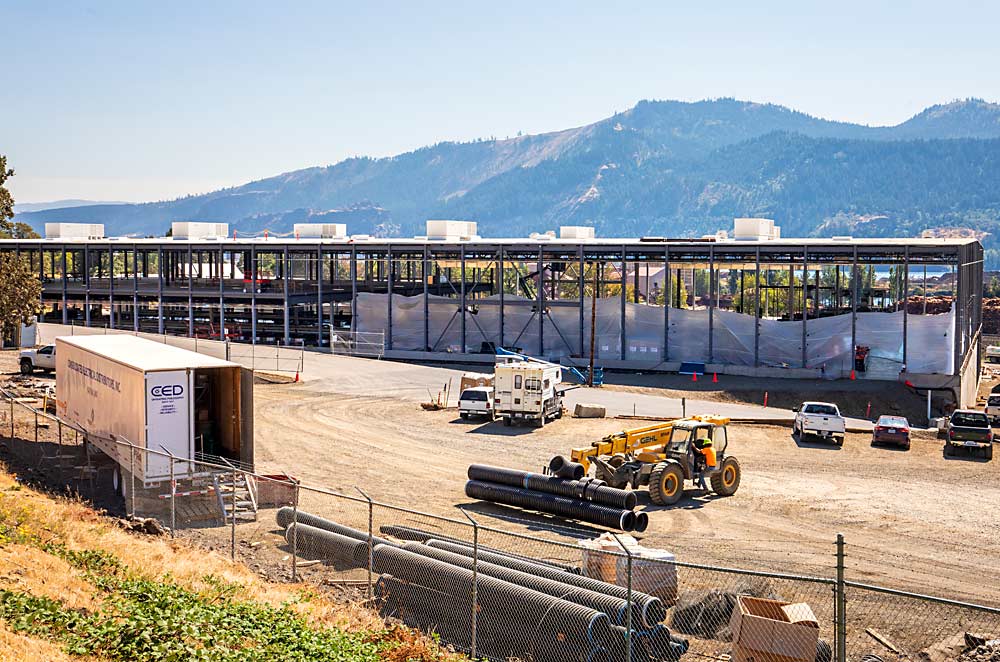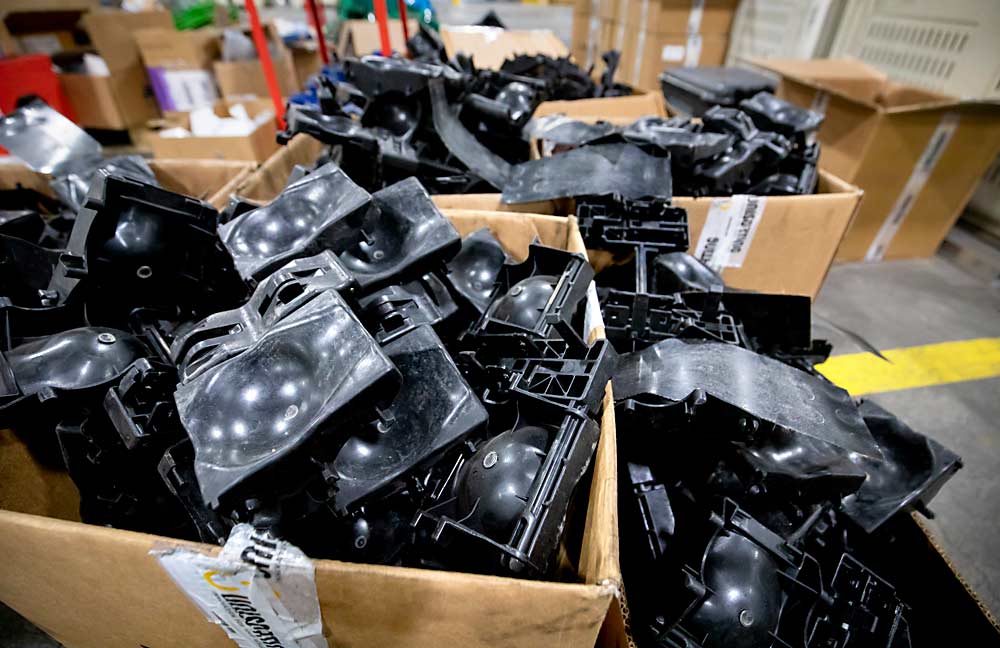
The pears at Diamond Fruit travel a pre-sort line much like any other in the fruit industry — wash, quality control, sizing lanes — with one major difference. As the pears make their way under the optical sorters, they are carried in oblong-shaped cups that flip them over to capture images of both sides.
That quick step, brought online in 2018, may be a harbinger of advances in an industry vexed by the lack of dwarfing root stocks, new varieties and razzle-dazzle packing equipment that has historically been reserved for the rounder shape of apples and cherries.
“It’s neat to see in the pear industry that this attention, this next step is coming into the pear industry,” said David Garcia, general manager of the Hood River, Oregon, fruit cooperative.
Similar advancements are on their way throughout the industry, officials say.

“Pear lines have made some strides,” said Kevin Moffitt, president and CEO of Pear Bureau Northwest. “I would expect in years to come we’ll see more.”
For example, Mt. Adams Fruit Co. will incorporate some cutting-edge technology in its new packing line, under construction in Bingen, Washington — just across the Columbia River from Diamond Fruit — after a 2017 fire destroyed the previous facility.
Some of the changes will include a second-generation optical pear defect sorting station, which marks an improvement to the 2016 version destroyed in the fire, said CEO Don Gibson.
That Greefa-built system, which rolls pears to expose all areas to the cameras, itself was the first of its kind for pears in North America.
Others include fast forced-air cooling for packed pears and pre-conditioning rooms, a seven-pallet-high automatic storage and retrieval system, robotic palletization and carton handling, bin washing and a stand-alone drying room.
The facility was scheduled to be ready for initial packing the first week of January with full operations expected by March 1, Gibson said.

For years, packers have been unable to enjoy the speed and accuracy of optical sorters on pears because their shape prevented them from spinning like cherries and apples. It was a major topic of discussion at the 2017 Interpera conference and high on the list of competition between packing line manufacturers around the globe.
“You always have to adapt a little bit,” Gibson said. “Pears are just handled a little differently.”
Diamond Fruit thought it was time to invest as a way to stay competitive into the future.
“We want to be here another 100 years,” Garcia said. Diamond celebrated its 100th anniversary as a cooperative in 2013.
Big investment
The cooperative, which markets through Starr Ranch Growers, based in Wenatchee, Washington, invested $7.5 million in the Unitec pre-sort line, which also features new automatic bin dumpers, robotics at each end of the pre-size line and automatic sample retrieval.
Spending that kind of money was a tough decision for the cooperative, one of the largest winter pear packers in the world, but the grower-owners knew they needed to modernize their packing facility, which had still been using converted potato equipment that was up to 60 years old, said Scott Halliday, chairman of the company.

“No one from the grower base complained, everyone agreed,” said Halliday, a fourth-generation grower and one of 85 owner-members, all in the Hood River Valley.
The company offset the cost by closing another pre-sort line located in nearby Parkdale, Oregon, Halliday said, though the company still has cold storage and controlled-atmosphere storage there.
The company started reviewing its options about six years ago in an attempt to modernize — and found precious little. They found apple lines that had been tweaked but little in anything specific to pears.
Then they came across Unitec, known more for cherries. The Italian manufacturer wanted to build a prototype and delivered it in March 2017. Diamond Fruit tried running pears over it.
After that visit, the cooperative agreed to invest and asked Unitec to build a permanent line. They chose a mechanism that flips the fruit in pear-shaped cups instead of rolling it, to avoid scuffing the sensitive skin.

“Is it perfect? No,” Garcia said. Sometimes the smaller fruit still rolls.
However, the grading has been spot-on so far and the company ran pre-sized Bartletts and Anjous in December, later than usual, and saw little fruit damage.
“We’re getting a lot of confidence in the gentleness of the machine,” Garcia said.
Also in December, the workers ran Bosc pears through the line and are convinced the machinery will work in the long term on the variety with long and skinny necks.
Meanwhile, the packer has boosted its capacity with the new equipment. The pre-size line ran about 75 bins per hour before the improvements and now averages about 100 bins per hour. They could push it to 120 bins, but the rest of their infrastructure couldn’t keep up that pace, Garcia said.

The company also cut its pre-size sorting staff from 75 to seven. Those folks all have been switched to the packing side of the building and the firm still needs more employees, Garcia said.
Judging from their visitors, Garcia agrees pear-specific advancements are coming elsewhere to the industry. “We’ve had some people come look at it,” he said. •
—by Ross Courtney
Related: Packing house highlights






Leave A Comment